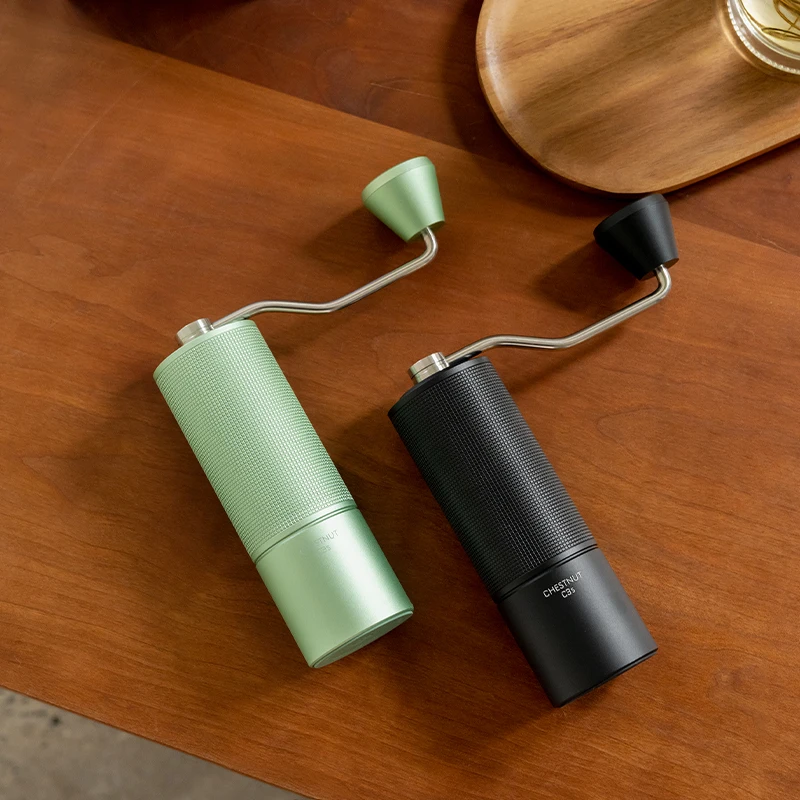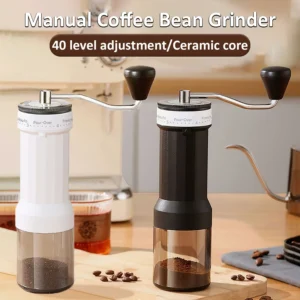1. Why Stainless Steel Coffee Grinder Durability Matters
When it comes to coffee equipment, durability isn’t just about getting your money’s worth—it’s about maintaining consistent brewing quality over years of use. For coffee grinders, durability means resistance to wear, corrosion, and physical damage that could affect your daily cup of coffee.
Coffee enthusiasts know that investing in a high-quality grinder is essential for exceptional brewing. The durability of your grinder directly impacts the consistency of your grind size over time, which in turn affects extraction, flavor, and ultimately your coffee experience. Quality stainless steel grinders often last 7-10 years or more with proper care, making them an excellent long-term investment for serious coffee lovers.
The durability of your grinder also affects your daily routine. A reliable grinder performs consistently morning after morning, producing the uniform particle sizes needed for balanced extraction. When durability fails, your coffee quality suffers, potentially leading to bitter, sour, or unbalanced brews.
In this guide, we’ll explore what makes stainless steel grinders so durable, examine critical components like burrs and housings, and provide practical advice for maximizing your grinder’s lifespan. Understanding all-metal coffee grinder designs will help you make informed decisions about this essential brewing tool.
2. The Science Behind Stainless Steel’s Durability in Coffee Grinders
Stainless steel earns its reputation for durability through a specific combination of metallurgical properties that make it ideal for coffee grinder construction. At its core, food-grade stainless steel contains chromium (typically 16-18%), which creates a passive oxide layer that prevents corrosion. Many premium grinders use specific grades like 304, 316, or 440C, each offering different performance characteristics.
The properties that make stainless steel exceptional for coffee grinders include:
- Corrosion resistance: Stainless steel effectively resists coffee acids, moisture, and cleaning solutions that would damage other metals
- Hardness and wear resistance: Quality stainless steel burrs maintain their cutting edges through thousands of pounds of coffee beans
- Structural strength: Stainless steel components resist deformation during grinding, maintaining precise tolerances
- Non-porous surface: Unlike some materials, stainless steel doesn’t absorb coffee oils, preventing rancidity and off-flavors
These properties translate into real benefits for coffee lovers. The burrs stay sharp longer, the adjustment mechanisms remain precise, and the entire grinder maintains consistent performance. The hardness ratings of burr-grade stainless steel typically range from HRC 55-62, allowing them to cut through beans efficiently without excessive wear.
When browsing through stainless steel manual coffee grinders, these material qualities should be top considerations. The grade of stainless steel used, particularly in the burrs and bearing surfaces, directly determines how well the grinder will perform over years of daily use.
3. Stainless Steel Burrs: The Critical Component for Longevity
While every part of a coffee grinder matters, the burrs are undoubtedly the heart of the system. These precision-engineered cutting surfaces determine your grind quality and consistency, making their durability paramount to long-term performance.
Stainless steel burrs offer several advantages when it comes to longevity. Their initial sharpness allows for clean cutting of coffee beans rather than crushing, resulting in more uniform particles. More importantly, quality stainless steel burrs retain this cutting ability through thousands of uses. Professional-grade stainless steel burrs typically maintain optimal performance through 1,000-1,500 pounds (450-680 kg) of coffee before showing noticeable degradation.
Several factors affect burr lifespan:
Bean Hardness: Lighter roasts are significantly harder and more dense than dark roasts, causing more wear on the cutting surfaces. If you primarily grind light roasts, expect slightly faster burr wear.
Grinding Volume: Daily espresso grinding (which requires fine particles) creates more metal-to-metal contact than coarser settings, potentially accelerating wear compared to weekly pour-over use.
Foreign Objects: Even small stones or debris missed during bean processing can cause nicks in burr edges, affecting grind consistency.
With proper maintenance, high-quality stainless steel burrs can provide years of consistent grinding performance. Many coffee enthusiasts find that all-metal coffee grinders offer superior durability compared to models with plastic components, especially in the critical grinding mechanism.
4. Beyond the Burrs: Durability of Other Stainless Steel Components
Grinder Housing Durability
Stainless steel housings offer exceptional resistance to everyday wear and tear. Unlike plastic alternatives that may crack or aluminum that can dent easily, stainless steel housings maintain their structural integrity despite drops, bumps, or other accidents. This resilience ensures the internal components remain properly aligned, preventing performance degradation over time.
The appearance advantage shouldn’t be overlooked either—stainless steel resists scratches better than many other materials and maintains its aesthetic appeal even after years of kitchen counter use. This resistance to cosmetic damage helps preserve not just functionality but also value.
Internal Mechanisms
The durability benefits extend to critical internal components like:
Shafts and Bearings: Stainless steel shafts resist bending and maintain precise alignment even under pressure. Quality bearings support smooth rotation while minimizing metal-on-metal wear.
Adjustment Systems: The threads and contact points in a stainless steel grinder’s adjustment mechanism resist stripping and wear, maintaining precise grind settings over time.
A solid stainless steel housing also provides superior protection for any electrical components in electric models. The rigid structure reduces vibration, preventing stress on motors and internal wiring that could lead to premature failure.
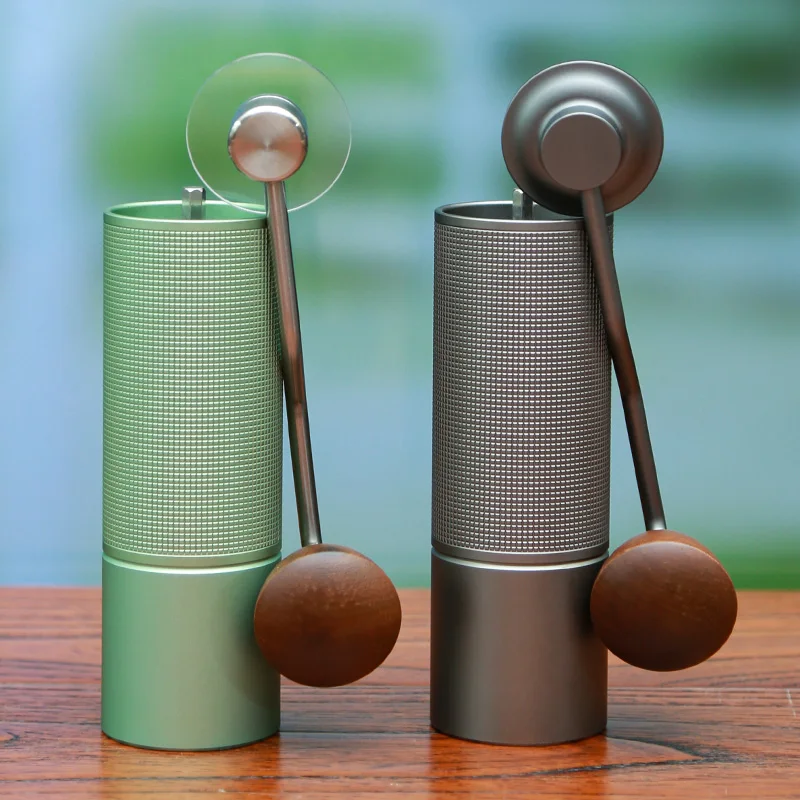
Understanding metal vs plastic hand grinder construction highlights why many coffee enthusiasts choose stainless steel for its long-term reliability. While the initial investment may be higher, the extended lifespan and consistent performance typically justify the cost.
5. Material Showdown: Stainless Steel vs. Alternative Burr Materials
When evaluating coffee grinder durability, understanding how stainless steel compares to alternative materials is essential for making informed decisions:
| Material | Hardness | Durability | Heat Properties | Cost | Best For |
|---|---|---|---|---|---|
| Stainless Steel | Moderate (HRC 55-62) | Excellent overall durability | Moderate heat retention | Moderate | All-purpose use, daily grinding |
| Ceramic | High (8-9 on Mohs scale) | Excellent edge retention, but brittle | Minimal heat generation | Moderate to high | Light-duty use, heat-sensitive beans |
| Titanium-Nitride Coated | Very high | Superior wear resistance | Low heat transfer | High | Heavy use, specialty applications |
| Cast Steel | Moderate | Good durability, less precise | Higher heat retention | Lower | Budget options, occasional use |
Stainless steel burrs strike an excellent balance of durability and performance. While ceramic burrs are harder (rating 8-9 on the Mohs scale compared to approximately 5.5-6.5 for stainless steel), they’re also more brittle and can chip or crack if foreign objects enter the grinder. This risk makes ceramic potentially less durable in real-world conditions despite its theoretical advantage in edge retention.
Coated burrs (such as titanium nitride or diamond-like carbon) offer enhanced hardness and wear resistance but come at a premium price point. These specialized burrs can maintain their edge through approximately 1,800-2,000 pounds (815-907 kg) of coffee, roughly 30-50% longer than standard stainless steel.
Heat retention is another important factor. Stainless steel conducts more heat than ceramic, which some argue could affect delicate flavor compounds in coffee. However, in hand grinders or properly designed electric models, this heat difference is typically minimal during normal use.
When deciding between ceramic vs steel grinder burrs, consider your specific usage patterns. For most home users grinding 20-40g of coffee daily, quality stainless steel burrs provide the best balance of durability, performance, and value.
6. Key Factors Affecting Your Stainless Steel Grinder’s Lifespan
The actual lifespan of your stainless steel grinder depends on several key variables beyond just the material itself:
Manufacturing Quality Factors
- Steel grade and composition: Higher-grade stainless steel with proper chromium content resists corrosion better and maintains structural integrity longer
- Precision of machining: Tighter tolerances and better burr alignment reduce uneven wear and stress on components
- Overall build quality: Proper assembly, quality control, and engineering design significantly impact durability
Usage Patterns
- Grinding frequency: A grinder used 3-4 times daily will wear faster than one used weekly
- Bean types: Oily dark roasts can build up residue that affects performance, while harder light roasts create more mechanical wear
- Grind settings: Consistently using very fine settings (especially for espresso) creates more metal-to-metal contact than coarser settings
Maintenance Impact
- Cleaning frequency: Regular removal of coffee particles and oils prevents buildup that can strain motors and cause uneven burr wear
- Cleaning methods: Using appropriate tools rather than water or harsh chemicals preserves the metal’s integrity
- Storage conditions: Humidity and temperature fluctuations can affect internal components over time
These factors have cumulative effects on durability. For example, a high-quality all-metal hand grinder used daily but properly maintained might outlast a cheaper model used less frequently but poorly maintained.
The most significant difference often lies in manufacturing quality. Specialty-grade stainless steel grinders feature more precise machining, better materials, and tighter tolerances than mass-market alternatives, resulting in considerably longer usable lifespans despite similar material descriptions.
7. Warning Signs: How to Recognize Performance Degradation Over Time
Identifying the early signs of grinder wear helps you address issues before they affect your coffee quality. Watch for these indicators:
Inconsistent Grind Size: The most telling sign of burr wear is increasing particle size variation. If you notice more fines (dust-like particles) or boulders (oversized chunks) in your grounds, your burrs may be dulling. This inconsistency leads to uneven extraction, with some particles over-extracting (causing bitterness) while others under-extract (causing sourness).
Increased Grinding Time: When sharp burrs begin to dull, they become less efficient at cutting. If grinding the same amount of coffee takes noticeably longer than when your grinder was new, wear is likely occurring.
Unusual Sounds: New or changing noises during operation often indicate mechanical issues. Listen for grinding, scraping, or clicking sounds that weren’t present before.
Visual Burr Changes: Periodically inspect your burrs (when cleaning) for visible signs of wear. Dulled edges, chips, or discoloration along the cutting surfaces indicate degradation.
For electric models, watch for additional warning signs:
Motor Overheating: If the motor housing becomes unusually hot during normal operation, internal components may be experiencing excess friction.
Inconsistent Operation: Stuttering, stalling, or requiring multiple attempts to complete grinding may indicate motor strain from worn components.
Difficult Adjustments: If changing grind settings becomes harder or less precise, the adjustment mechanism may be wearing down.
Understanding why coffee grinders become inconsistent helps you determine whether maintenance, repair, or replacement is the appropriate solution. Early intervention can often extend your grinder’s useful life significantly.
8. Addressing Common Durability Concerns in Stainless Steel Grinders
Coffee enthusiasts often have questions about the long-term performance of stainless steel grinders. Let’s address the most common concerns:
Can stainless steel burrs rust?
Food-grade stainless steel used in quality coffee grinders is highly resistant to rust and corrosion. True rust is extremely rare with proper care. What might appear as rust is typically coffee residue or discoloration from oils. That said, leaving any metal grinder wet for extended periods can potentially cause surface oxidation. Always thoroughly dry your grinder after cleaning.
Will stainless steel burrs need sharpening?
Unlike kitchen knives, coffee grinder burrs generally aren’t designed to be resharpened. Their complex geometry makes professional resharpening impractical. Instead, quality burrs are engineered to maintain acceptable performance for years before replacement becomes necessary. When performance degrades significantly, replacement is typically the better option.
How often should burrs be replaced?
For home users grinding 20-30g daily, quality stainless steel burrs typically last 5-7 years before replacement becomes necessary. Commercial environments or heavy home use (100g+ daily) may require replacement every 2-3 years. The need for replacement is best determined by performance rather than time—when grind consistency noticeably declines despite proper cleaning.
Can stainless steel grinders handle oily beans?
Yes, stainless steel handles oily beans better than many alternative materials. The non-porous surface prevents oil absorption, and proper cleaning prevents buildup. However, frequent use with very oily dark roasts requires more diligent cleaning to prevent residue accumulation that can affect performance.
Maximizing your manual coffee grinder’s lifespan requires addressing these concerns through proper maintenance and care routines, which we’ll explore in the next section.
9. Maximizing Your Investment: Maintenance Tips for Stainless Steel Grinders
Proper maintenance dramatically extends your stainless steel grinder’s lifespan. Following this schedule helps ensure consistent performance year after year:
Daily Maintenance (Takes 30 seconds)
- Brush out loose grounds from the burr chamber and collection bin
- Wipe down the exterior with a dry cloth to remove coffee dust and fingerprints
- Keep the grinder in a dry location away from direct sunlight
Weekly Maintenance (Takes 3-5 minutes)
- Remove and clean the bean hopper to prevent oil buildup
- Use a grinder brush to thoroughly clean between burr teeth
- Tap the grinder gently to dislodge compacted grounds from hard-to-reach areas
- For electric models, check the cord and plug for damage
Monthly Maintenance (Takes 10-15 minutes)
- Disassemble according to manufacturer instructions
- Clean burrs thoroughly with a dedicated grinder brush
- Remove any buildup from adjustment mechanisms
- Check for signs of uneven wear on burrs
- Ensure all gaskets and seals remain in good condition
Quarterly Deep Clean (Takes 20-30 minutes)
- Complete disassembly for thorough cleaning
- Use grinder cleaning tablets or uncooked rice to remove oil residue (check manufacturer recommendations first)
- Inspect all components for wear
- Check and tighten any loose screws or fasteners
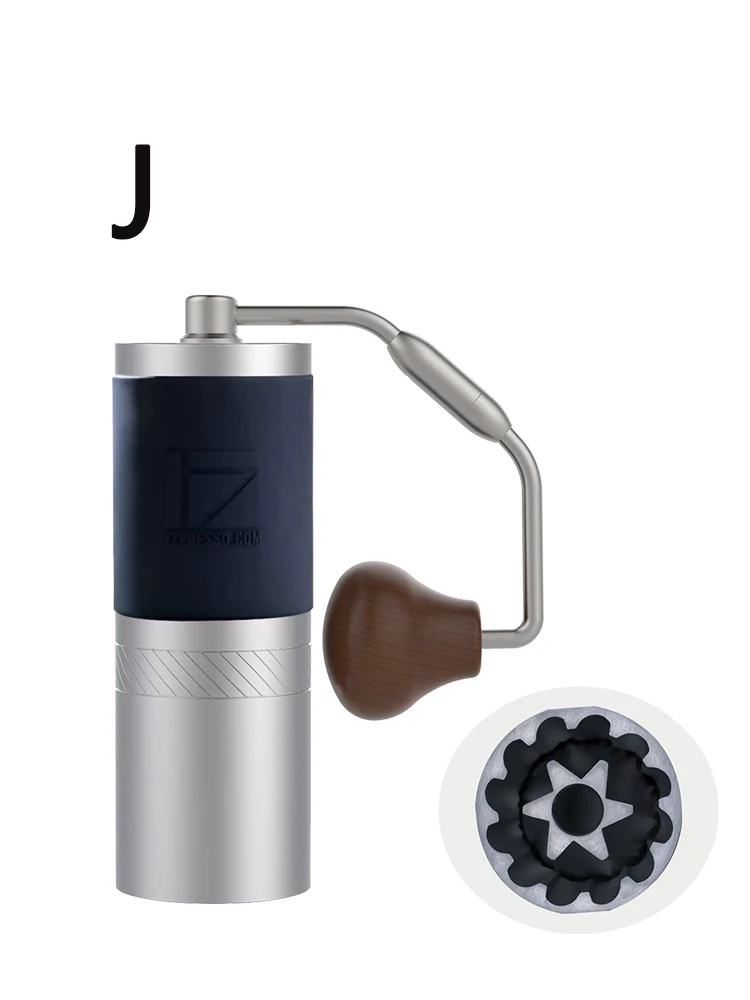
Recommended Cleaning Products:
– Dedicated coffee grinder brushes with stiff bristles
– Microfiber cloths for exterior cleaning
– Grinder-specific cleaning tablets (for compatible models)
Products to Avoid:
– Water or liquid cleaners on burrs or electrical components
– Abrasive scrubbers that could scratch surfaces
– Harsh chemicals or solvents
For optimal cleaning, always refer to your specific grinder’s manual. Many manual coffee grinders with stainless steel components have model-specific disassembly procedures that ensure proper cleaning without damaging precision parts.
10. Is a Durable Stainless Steel Coffee Grinder Worth the Investment?
When evaluating whether to invest in a premium stainless steel coffee grinder, consider both the initial cost and the long-term value. While quality stainless steel grinders often cost $100-300, their extended lifespan significantly reduces the cost per use.
For example, a $200 stainless steel grinder used daily for 7 years costs approximately $0.08 per day—less than the price difference between pre-ground coffee and whole beans. Meanwhile, a $50 grinder that lasts just 2 years costs about $0.07 per day but delivers considerably lower performance throughout its shorter life.
Hand Burr Grinder, Hand Crank Coffee Grinder, Manual Espresso Grinder, Portable Coffee Grinder
Price range: $262.72 through $300.22 Select options This product has multiple variants. The options may be chosen on the product pageManual Burr Mill, Manual Coffee Grinder Stainless Steel, Manual Coffee Mill Grinder, Mechanical Coffee Grinder
Price range: $127.26 through $130.32 Select options This product has multiple variants. The options may be chosen on the product pageHand Burr Grinder, Manual Coffee Grinder Stainless Steel, Precision Manual Grinder
Price range: $183.64 through $187.52 Select options This product has multiple variants. The options may be chosen on the product pageCeramic Burr Coffee Grinder, Hand Burr Grinder, Hand Crank Coffee Grinder, Manual Coffee Bean Grinder
Price range: $59.17 through $59.96 Select options This product has multiple variants. The options may be chosen on the product page
Stainless steel grinders particularly excel for:
Daily Brewers: If you make coffee every morning, the consistency and reliability of stainless steel pays dividends in cup quality and convenience.
Espresso Enthusiasts: The precision and stability of high-quality stainless steel grinders make them essential for espresso, where small grind variations significantly impact extraction.
Quality-Focused Coffee Lovers: Those who appreciate the nuances of specialty coffee benefit most from the uniform particle size that well-made stainless steel grinders provide consistently over years.
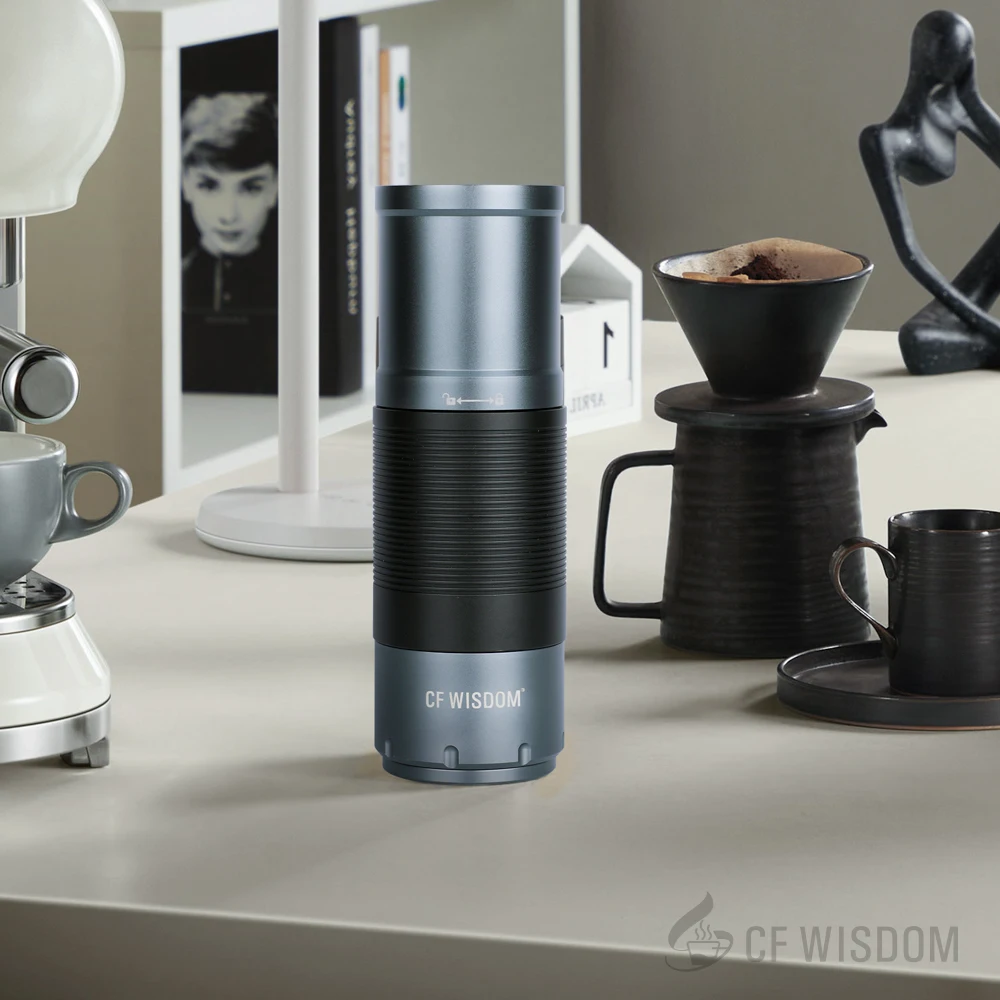
For occasional coffee drinkers or those on tight budgets, entry-level manual coffee burr grinders still offer better performance than blade grinders, though with potentially shorter lifespans than premium models.
The true value proposition lies in performance consistency over time. A grinder that maintains precise particle distribution year after year lets you experience your coffee as intended, without the extraction problems that come with worn or inferior grinding equipment.
Ultimately, stainless steel grinders deliver the perfect balance of longevity, performance, and value for most coffee enthusiasts, making them an investment that pays dividends with every cup.

